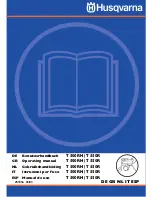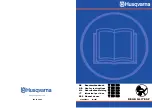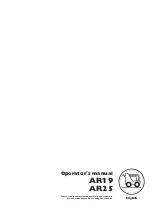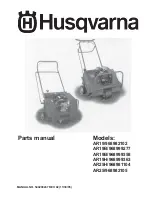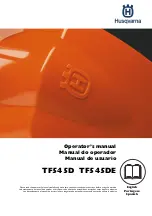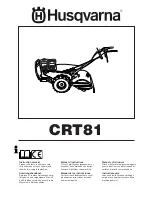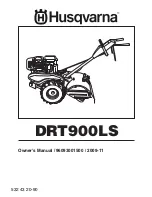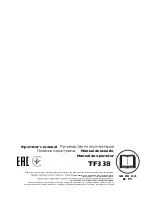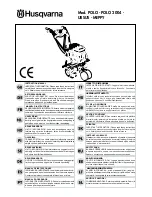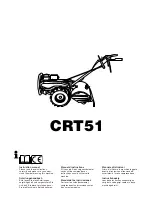
C0210101-07-16-EN
22
-
Handle the unit carefully without making sudden movements or tilting the unit at an angle of more than 6°.
-
Keep at a safe distance and do not, for any reason, stand with parts of the body under or near the lifted unit
The surface on which the unit is placed must be level and sufficiently strong to take the weight of the machine when it is full of water and running.
To reduce vibrations to the supporting structures, assemble vibration dampers at each fastening point indicated in the dimensional drawing. Install
the vibration dampers under the base with the unit lifted no more than 200 mm off the ground and avoid standing with parts of the body under the
unit. In any case, always secure the unit on the ground. The vibration dampers may extend outside the span of the machine and, in which case, will
require suitable support.
4.2 Clearance
Observe the clearances indicated in the dimensional drawing
Guarantee flooring in the entire clearance area around the unit at the same level as the base of the same unit.
Caution:
When two units are set side by side on the battery side, add up the measurements to be respected on the battery side of the two units.
When the unit is in its final position and full of water, adjust the jacks of the vibration dampers.
4.3 Checking that compressors are secured in position
When the compressors are installed on spring vibration dampers, remove the block before start-up observing the instructions in the vicinity of the
compressor.
4.4 Place of installation
The unit must be installed according to the requirements of standard EN 378-3 and the local regulations in force, in particular taking into account
the category of occupation of the premises and the safety class defined by EN 378-1
R134a
R410A
R404A
R407C
HFO-1234ze(E)
safety class
A1
A1
A1
A1
A2
Tab.3
The air-cooled machines must be protected against wind: because wind can affect control of cooling and prevent defrosting in the heat pumps.
The finned coils must also be protected against dirt (dust, leaves, wood chips, etc.) and atmospheric conditions that can cause corrosion.
5
HYDRAULIC CONNECTIONS
The connection pipes must be suitably supported so that they do not weigh down on the unit. Avoid rigid connections between the machine and the
pipes, and install vibration dampers.
For temperatures, minimum and maximum water flow rates and the content of water in the heat exchanger hydraulic circuit refer to the unit bulletin
or ask the supplier. These indications must be respected both when the unit is working and when it is switched off.
Protect the hydraulic circuit with an anti-freeze mix when the room temperature can drop below zero or eliminate all the water in the exchangers
and in the lowest points of the hydraulic circuit.
Any heating elements installed to prevent the pipes from freezing must be kept away from devices, sensors and materials that the heating elements
could damage or cause to malfunction (for example, temperature sensors, plastic components and power cables).
The temperature of the fluid at the machine outlet must always respect, even during the start-up phase, the work field envisaged by the
manufacturer. For that purpose a by-pass valve and/or other system devices can be inserted on the hydraulic circuit.
The water system of the units must be designed in such a way as to guarantee that, in all working conditions, the fluid circulating in the primary
circuit remains within the minimum limit set down in the technical bulletin of the unit.
If the unit is not equipped with a device for controlling the flow of vector fluid, it is necessary to guarantee that this is kept constant.
The vector fluid must never flow backwards in the water circuits. This could damage the pumps and cause bypassing, compromising the capacity
and temperature of the plant.
When several machines are installed in parallel:
prevent the back-flow of vector fluid, particularly when the machines are turned off; one way to do this is to fit non-return valves or other
suitable devices on the water circuit, specifically on the delivery side of the pumps or machines; units fitted with several separate pumps in
parallel have check valves on the delivery side of the pumps for this reason, but it is important to check that this is not the case for twin pumps
reduce the overall flow and shut off the flow to machines that are turned off in order to prevent mixing of fluids at different temperatures that
can affect performance and the operating limits

































